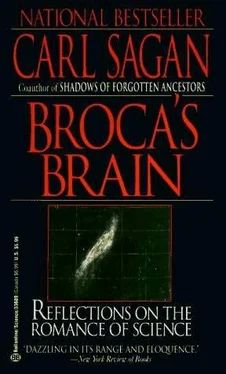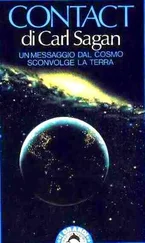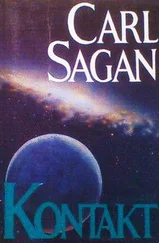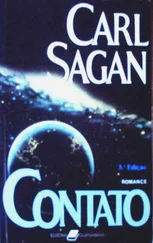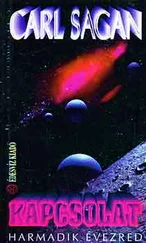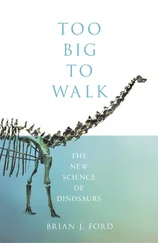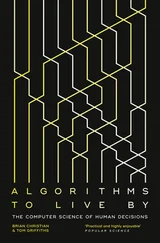Carl Sagan - Broca's Brain - The Romance of Science
Здесь есть возможность читать онлайн «Carl Sagan - Broca's Brain - The Romance of Science» весь текст электронной книги совершенно бесплатно (целиком полную версию без сокращений). В некоторых случаях можно слушать аудио, скачать через торрент в формате fb2 и присутствует краткое содержание. Жанр: Физика, на английском языке. Описание произведения, (предисловие) а так же отзывы посетителей доступны на портале библиотеки ЛибКат.
- Название:Broca's Brain: The Romance of Science
- Автор:
- Жанр:
- Год:неизвестен
- ISBN:нет данных
- Рейтинг книги:3 / 5. Голосов: 1
-
Избранное:Добавить в избранное
- Отзывы:
-
Ваша оценка:
- 60
- 1
- 2
- 3
- 4
- 5
Broca's Brain: The Romance of Science: краткое содержание, описание и аннотация
Предлагаем к чтению аннотацию, описание, краткое содержание или предисловие (зависит от того, что написал сам автор книги «Broca's Brain: The Romance of Science»). Если вы не нашли необходимую информацию о книге — напишите в комментариях, мы постараемся отыскать её.
Broca's Brain: The Romance of Science — читать онлайн бесплатно полную книгу (весь текст) целиком
Ниже представлен текст книги, разбитый по страницам. Система сохранения места последней прочитанной страницы, позволяет с удобством читать онлайн бесплатно книгу «Broca's Brain: The Romance of Science», без необходимости каждый раз заново искать на чём Вы остановились. Поставьте закладку, и сможете в любой момент перейти на страницу, на которой закончили чтение.
Интервал:
Закладка:
In Exodus , Chapter 9, it is said that the cattle of Egypt all died, but of the cattle of the Children of Israel there “died not one.” In the same chapter we find a plague that affects flax and barley but not wheat and rye. This fine-tuned host-parasite specificity is very strange for cometary vermin with no prior biological contact with Earth, but is readily explicable in terms of home-grown terrestrial vermin.
Then there is the curious fact that flies metabolize molecular oxygen. There is no molecular oxygen on Jupiter, nor can there be, because oxygen is thermodynamically unstable in an excess of hydrogen. Are we to imagine that the entire terminal electron transfer apparatus required for life to deal with molecular oxygen was adventitiously evolved on Jupiter by Jovian organisms hoping someday to be transported to Earth? This would be yet a bigger miracle than Velikovsky’s principal collisional thesis. Velikovsky makes (page 187) a lame aside on the “ability of many small insects… to live in an atmosphere devoid of oxygen,” which misses the point. The question is how an organism evolved on Jupiter could live in and metabolize an atmosphere rich in oxygen.
Next there is the problem of fly ablation. Small flies have just the same mass and dimensions as small meteors, which are burned up at an altitude of about 100 kilometers when they enter the Earth’s atmosphere on cometary trajectories. Ablation accounts for the visibility of such meteors. Not only would cometary vermin be transformed rapidly into fried flies on entrance into the Earth’s atmosphere; they would, as cometary meteors are today, be vaporized into atoms and never “swarm” over Egypt to the consternation of the Pharaoh. Likewise, the temperatures attendant to ejection of the comet from Jupiter, referred to above, would fry Velikovsky’s flies. Impossible to begin with, doubly fried and atomized, cometary flies do not well survive critical scrutiny.
Finally, there is a curious reference to intelligent extraterrestrial life in Worlds in Collision. On page 364 Velikovsky argues that the near-collisions of Mars with Earth and Venus “make it highly improbable that any higher forms of life, if they previously existed there, survived on Mars.” But when we examine the Mars as seen by Mariner 9 and Viking 1 and 2, we find that something over one-third of the planet has a modified cratered terrain somewhat reminiscent of the Moon and displays no sign of spectacular catastrophes other than ancient impacts. The other half to two-thirds of the planet shows almost no sign whatever of such impacts, but instead displays dramatic evidence of major tectonic activity, lava flows and vulcanism about a billion years ago. The small but detectable amount of impact cratering in this terrain shows that it was made much longer than several thousand years ago. There is no way to reconcile this picture with a view of a planet recently so devastated by impact catastrophism that all intelligent life would thereby have been eliminated. It is also by no means clear why, if all life on Mars were to be exterminated in such encounters, all life on Earth was not similarly exterminated.
PROBLEM VI. MANNA
MANNA, according to the etymology in Exodus , derives from the Hebrew words man-hu , which means “What is it?” Indeed, an excellent question! The idea of food falling from comets is not absolutely straightforward. Optical spectroscopy of comet tails, even before Worlds in Collision was published (1950), showed the presence of simple fragments of hydrocarbons, but no aldehydes-the building blocks of carbohydrates-were known then. They may nevertheless be present in comets. However, from the passage of Comet Kohoutek near the Earth, it is now known that comets contain large quantities of simple nitriles-in particular, hydrogen cyanide and methyl cyanide. These are poisons, and it is not immediately obvious that comets are good to eat.
But let us put this objection aside, grant Velikovsky his hypothesis, and calculate the consequences. How much manna is required to feed the hundreds of thousands of Children of Israel for forty years (see Exodus , Chapter 16, Verse 35)?
In Exodus , Chapter 16, Verse 20, we find that the manna left overnight was infested by worms in the morning-an event possible with carbohydrates but extremely unlikely with hydrocarbons. Moses may have been a better chemist than Velikovsky. This event also shows that manna was not storable. It fell every day for forty years according to the Biblical account. We will assume that the quantity that fell every day was just sufficient to feed the Children of Israel, although Velikovsky assures us (page 138) from Midrashic sources that the quantity that fell was adequate for two thousand years rather than a mere forty. Let us assume that each Israelite ate on the order of a third of a kilogram of manna per day, somewhat less than a subsistence diet. Then each will eat 100 kilograms per year and 4,000 kilograms in forty years. Hundreds of thousands of Israelites, the number explicitly mentioned in Exodus , will then consume something over a million kilograms of manna during the forty years’ wandering in the desert. But we cannot imagine the debris from the cometary tail falling each day, [7]preferentially on the portion of the Wilderness of Sin in which the Israelites happened to have wandered. This would be no less miraculous than the Biblical account taken at face value. The area occupied by a few hundred thousand itinerant tribesmen, wandering under a common leadership, is, very roughly, several times 10 −7the area of the Earth. Therefore, during the forty years of wandering, all of the Earth must have accumulated several times 10 18grams of manna, or enough to cover the entire surface of the planet with manna to a depth of about an inch. If this indeed happened, it would certainly be a memorable event, and may even account for the gingerbread house in “Hansel and Gretel.”
Now, there is no reason for the manna to have fallen only on Earth. In forty years the tail of the comet, if restricted to the inner solar system, would have traversed some 10 10km. Making only a modest allowance for the ratio of the volume of the Earth to the volume of the tail, we find that the mass of manna distributed to the inner solar system by this event is larger than 10 28grams. This is not only more massive by many orders of magnitude than the most massive comet known; it is already more massive than the planet Venus. But comets cannot be composed only of manna. (Indeed, no manna at all has been detected so far in comets.) Comets are known to be composed primarily of ices, and a conservative estimate of the ratio of the mass of the comet to the mass of the manna is much larger than 10 3. Therefore, the mass of the comet must be much larger than 10 31grams. This is the mass of Jupiter. If we were to accept Velikovsky’s Midrashic source above, we would deduce that the comet had a mass comparable to that of the Sun. Interplanetary space in the inner solar system should even today be filled with manna. I leave it to the reader to make his own judgment on the validity of Velikovsky’s hypothesis in the light of such calculations.
PROBLEM VII. THE CLOUDS OF VENUS
VELIKOVSKY’S prognostication that the clouds of Venus were made of hydrocarbons or carbohydrates has many times been hailed as an example of a successful scientific prediction. From Velikovsky’s general thesis and the calculations just described above, it is clear that Venus should be saturated with manna, a carbohydrate. Velikovsky says (page x) that “the presence of hydrocarbon gases and dust in the cloud envelope of Venus would constitute a crucial test” for his ideas. It is also not clear whether “dust” in the foregoing quotation refers to hydrocarbon dust or just ordinary silicate dust. On the same page Velikovsky quotes himself as saying, “On the basis of this research, I assume that Venus must be rich in petroleum gases,” which seems to be an unambiguous reference to the components of natural gas, such as methane, ethane, ethylene and acetylene.
Читать дальшеИнтервал:
Закладка:
Похожие книги на «Broca's Brain: The Romance of Science»
Представляем Вашему вниманию похожие книги на «Broca's Brain: The Romance of Science» списком для выбора. Мы отобрали схожую по названию и смыслу литературу в надежде предоставить читателям больше вариантов отыскать новые, интересные, ещё непрочитанные произведения.
Обсуждение, отзывы о книге «Broca's Brain: The Romance of Science» и просто собственные мнения читателей. Оставьте ваши комментарии, напишите, что Вы думаете о произведении, его смысле или главных героях. Укажите что конкретно понравилось, а что нет, и почему Вы так считаете.
